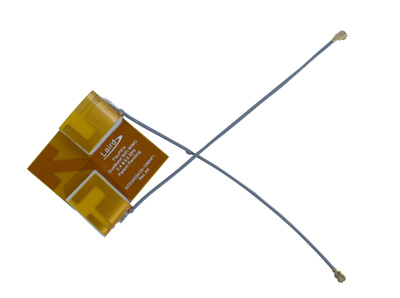Laird announced the FlexMIMO, the industry's first flexible PIFA antenna for Wi-Fi MIMO applications. The FlexMIMO has two integrated 2.4/5 GHz dual-band antenna elements specifically designed for 802.11 MIMO applications, such as automated equipment, medical devices and a myriad of IoT use cases. The FlexMIMO is based on a Planar Inverted-F Antenna (PIFA) structure, comprised of two mylar antenna elements with a foam core, resulting in a low profile, flexible antenna.
The FlexMIMO can be mounted in a wide range of applications. Laird's patented, flexible PIFA antenna structure allows for the use of the antenna on flat and curved surfaces (concave or convex), providing greater flexibility in design and superior antenna gain and performance.
"Laird is simplifying the technical requirements needed for implementing the two antennas for 802.11 MIMO radio applications," said Jonathan Kaye, senior director, product management, Laird. "The FlexMIMO is designed with the ideal orientation and spacing between the two integrated antenna elements, so it’s already optimized for 2 x 2 MIMO radio performance, giving our customers the best possible range and throughput for their wireless applications, without having to worry about antenna isolation and orientation."
The FlexMIMO has a layered, compact design that is about the size and thickness of a quarter, which reduces the overall solution footprint. With an operating temperature range of -40°C to +85°C, the 2.4/5 GHz model is specifically designed for 802.11n/ac/ax applications that use MIMO or Wi-Fi Diversity. The FlexMIMO has low ECC performance, enabling best in class throughput and range performance, and can be used with Laird's 60 Series of Wi-Fi + BT modules. Laird's FlexMIMO antenna is available immediately, as well as engineering samples. Depending on a customer’s unique requirements, customized versions are also available. The FlexMIMO is the latest in a family of antenna solutions that are engineered to provide unmatched quality and flexibility, while solving real-world antenna design challenges.

